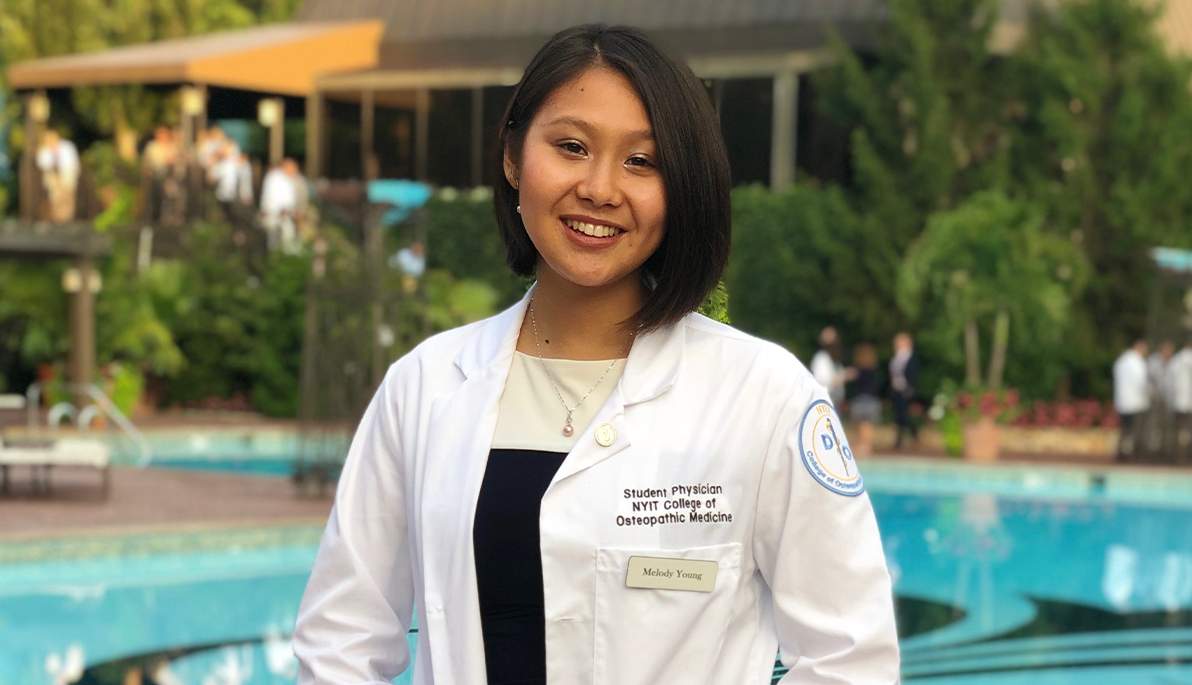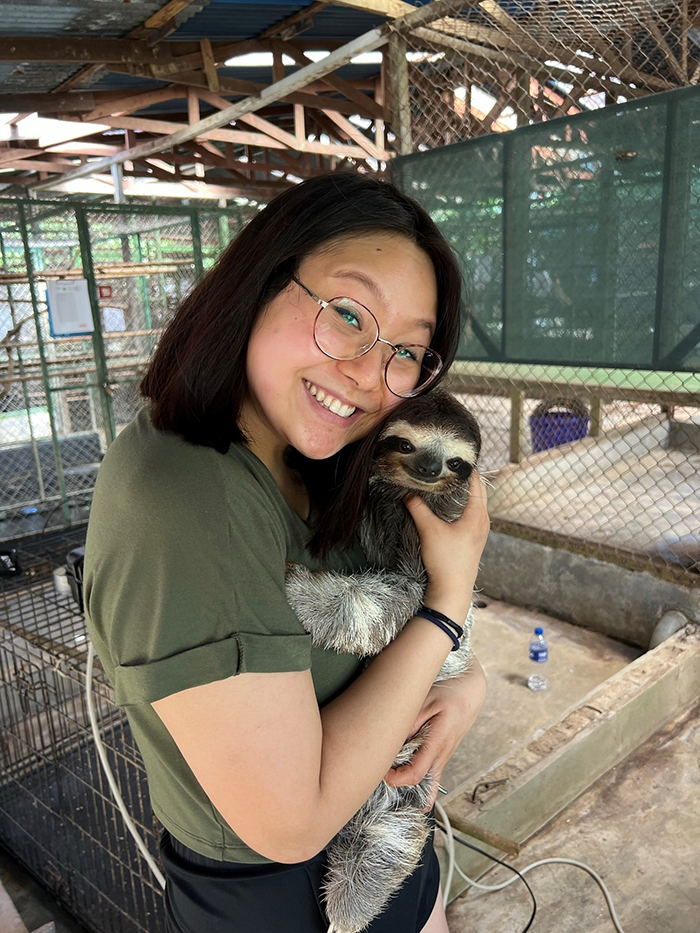
Student Profile: Melody Young

Major: D.O./Ph.D., Osteopathic Medicine, Medical and Biological Sciences
Year Expected to Graduate: 2026
Campus: Long Island
Hometown: Lake Grove, N.Y.
On the Move
“I remember sitting on the floor as a five-year-old kid watching Untold Stories of the E.R. and being mesmerized by the idea of saving lives,” says Melody Young when asked when she knew she wanted to study medicine. “Since then, I’ve had a one-track mind to get into medical school and here I am!”
Young applies what she calls her “one-track mind” to a wide and diverse array of interests, finding inspiration everywhere. Once, at the beach she saw a variety of birds coasting on the ocean breeze, just letting the air currents carry them. “I don’t have a background in physics or engineering, but moments like this draw me to these laws and lead me to try to apply mathematical/physical principles to understand the fascinating nature of animal movement,” she says.
This drive led Young to the osteopathic medicine, D.O./medical and biological sciences, Ph.D. program. In the first two years of the program, Young completed the traditional pre-clinical coursework. She is now in the two-year Ph.D.-level phase studying animal locomotion under the guidance of Assistant Professor Michael Granatosky, Ph.D. Their team has been working on a series of projects focusing on the biomechanics of climbing animals and have worked with such species as sloths, parrots, tree frogs, and spiders. They recently published a paper demonstrating that parrots use their heads as a third limb during vertical climbing, a behavior observed in no other lineage of animal.

The recipient of an Edward Guiliano Global Fellowship, Melody Young traveled to Costa Rica to collect data from three-toed sloths.
This project, which received media attention from outlets like the New York Times, Forbes, Smithsonian, and Nature, is being used as the basis for creating a climbing tripodal robot that may supplement and perhaps replace the need for electric line workers who are often injured or fall when they are hoisted above the ground to fix power outage wire issues.
“There is an element of finality that I really love about the field of biomechanics,” she says. “I come from a molecular biology background, where it’s difficult to isolate a single etiologic mechanism because of the confining nature of experiments. The work I do with Dr. Granatosky requires thinking creatively and finding solutions for how to collect data from often times difficult animals.”
Continuing her studies with Granatosky, Young received an Edward Guiliano Global Fellowship to travel to Costa Rica and collect data from three-toed sloths. “Everyone expects that I love animals and must be a treasure trove for animal facts, but I’ve learned more about animals this past year than I’ve known my whole life!” she says.
Young’s knowledge about animals has expanded and has broadened her horizons. “I’ve been set on practicing medicine for as long as I remember, but as I’ve gotten older and especially after this last year, I’ve realized I find the most joy in conducting research,” she says. “I haven’t fully decided if I want to pursue medicine after graduating or continue my scientific training as a post-doctorate fellow so I’m hoping to figure that out in the next few years.”









